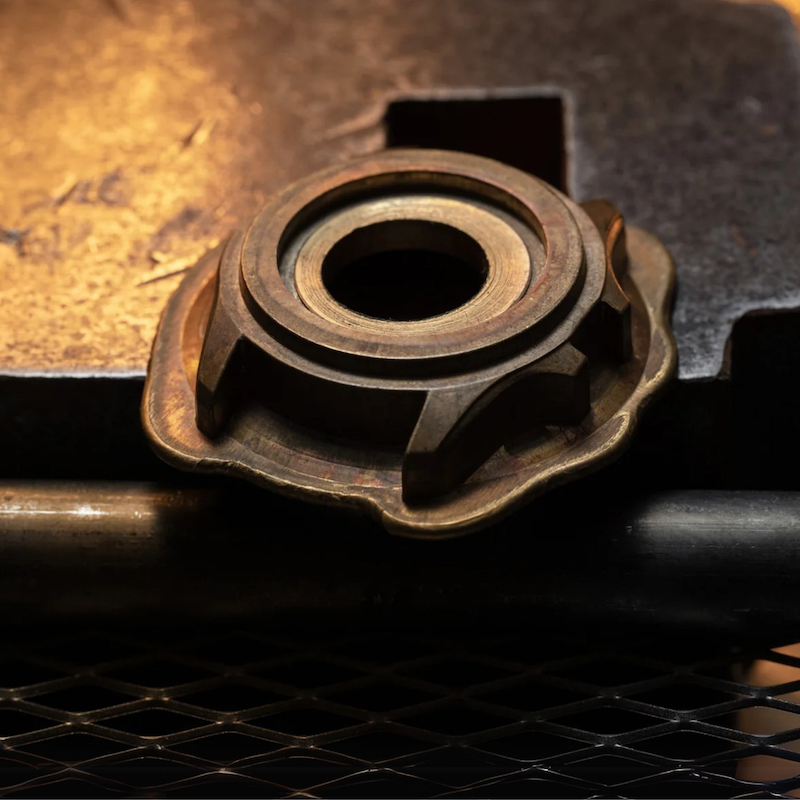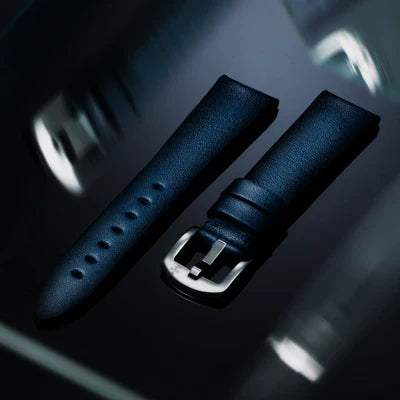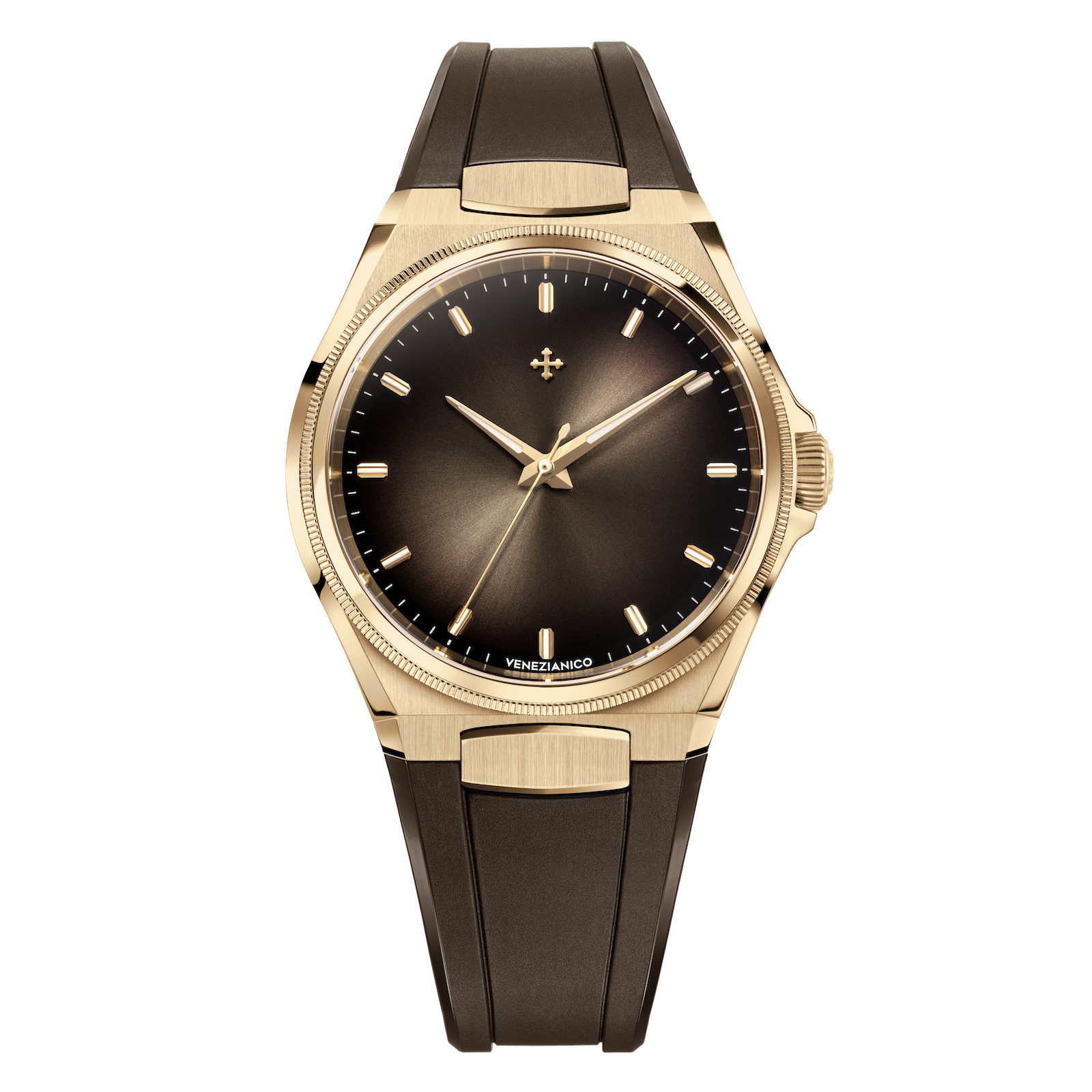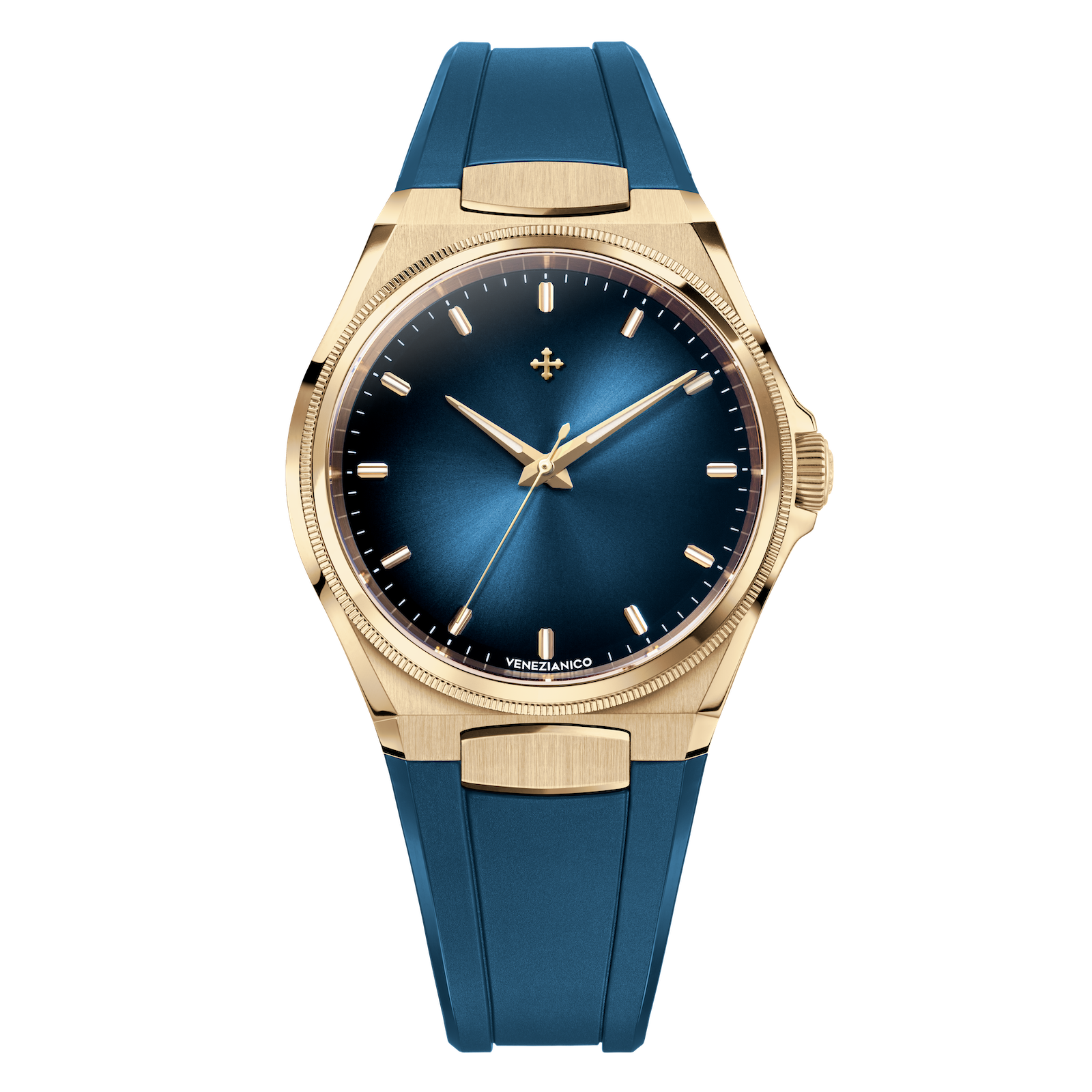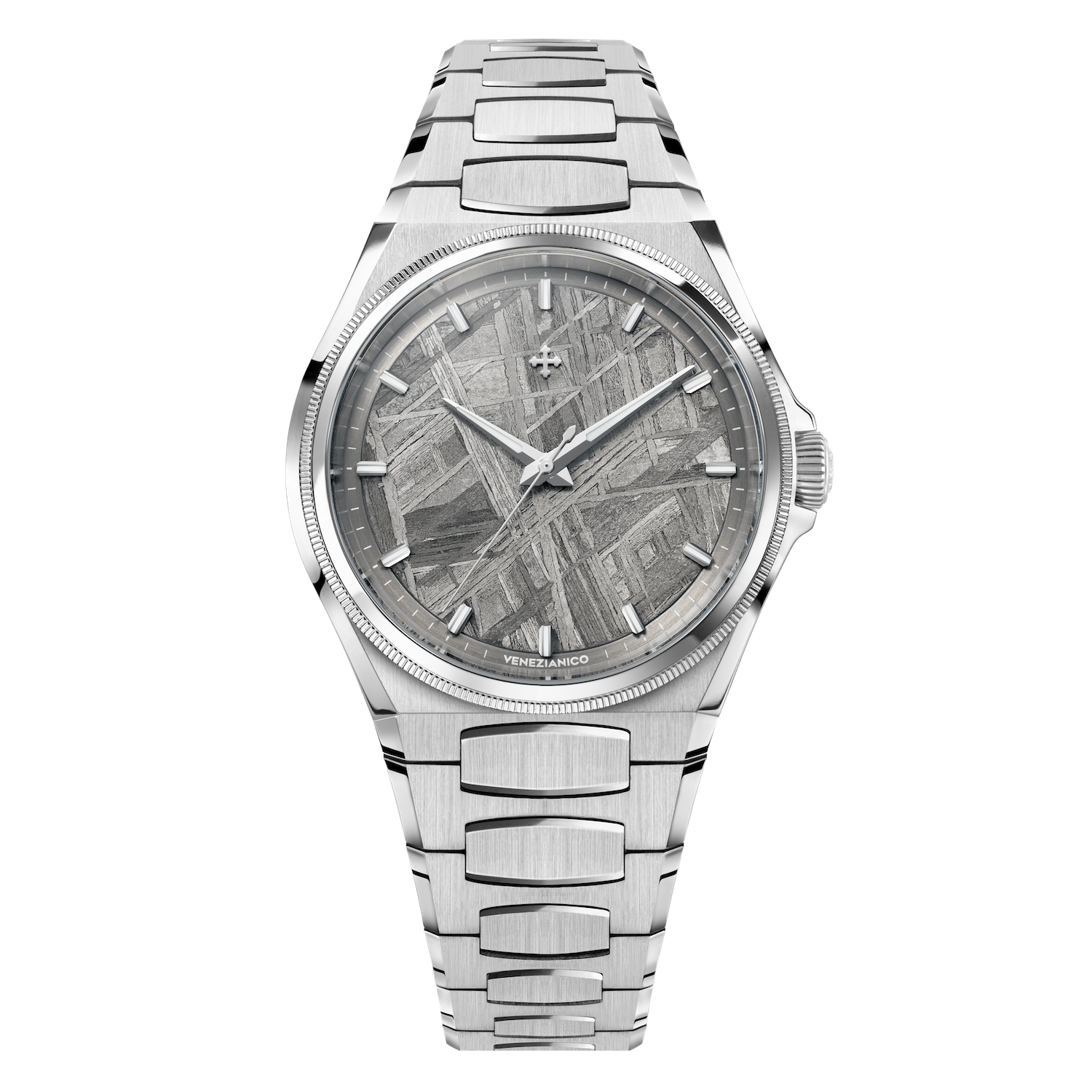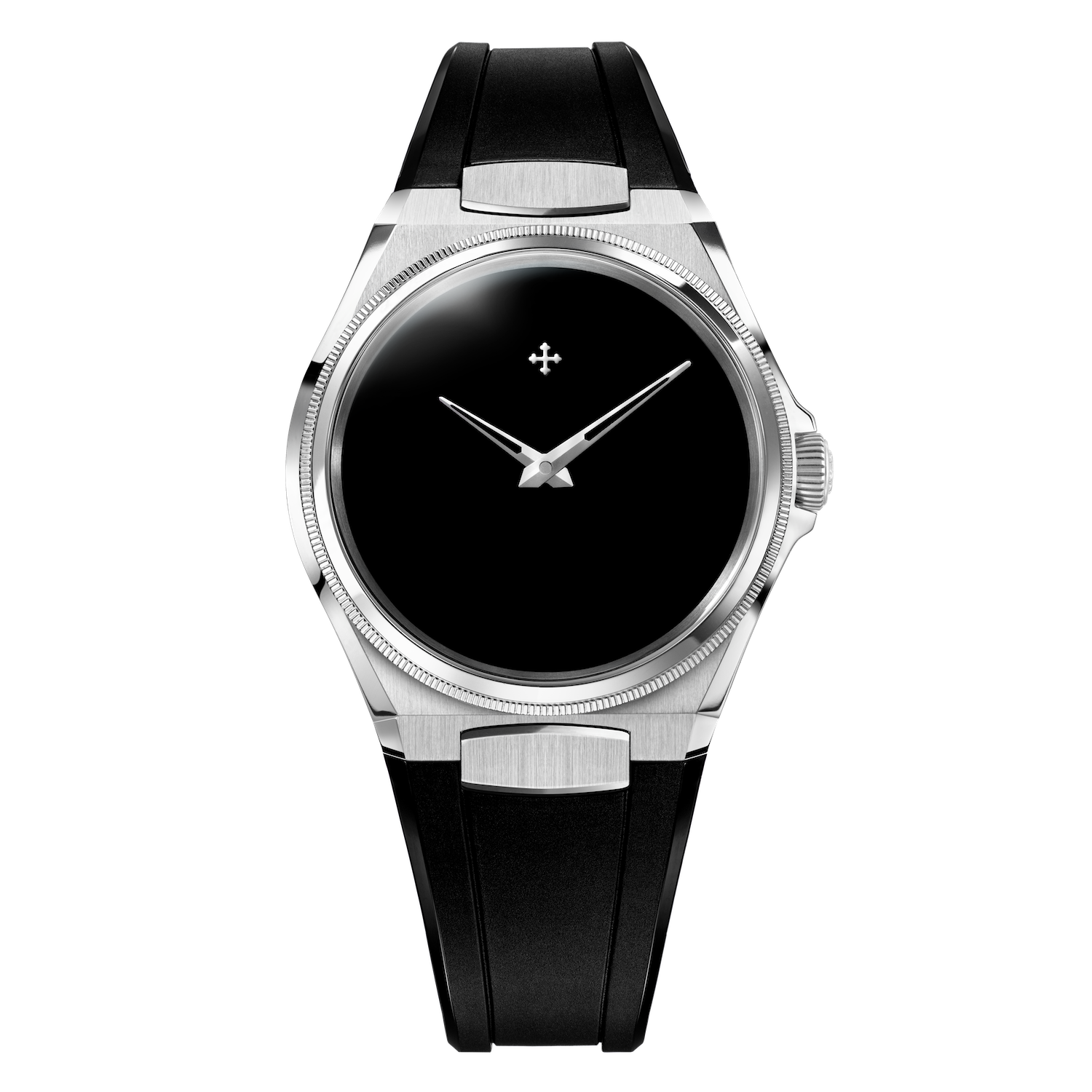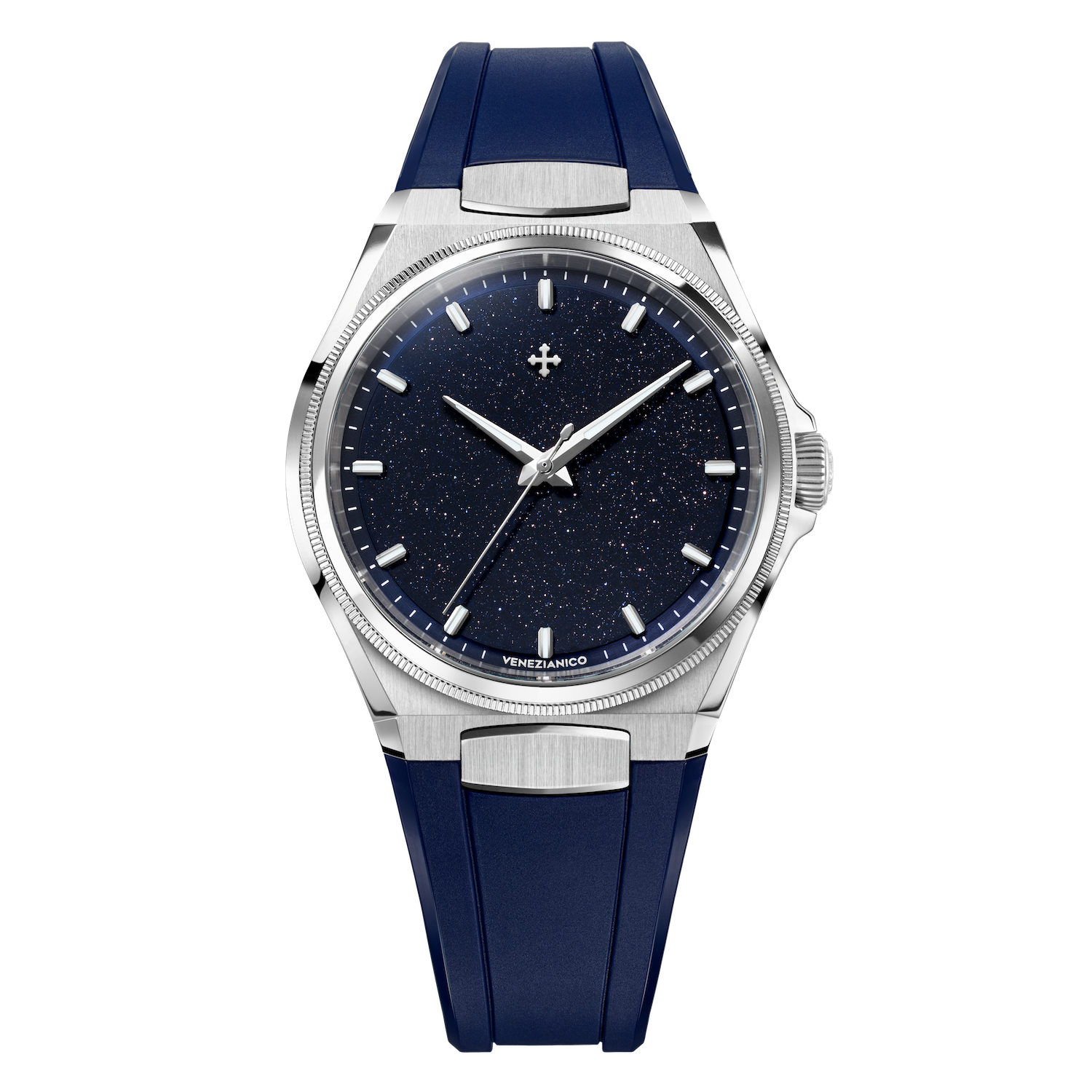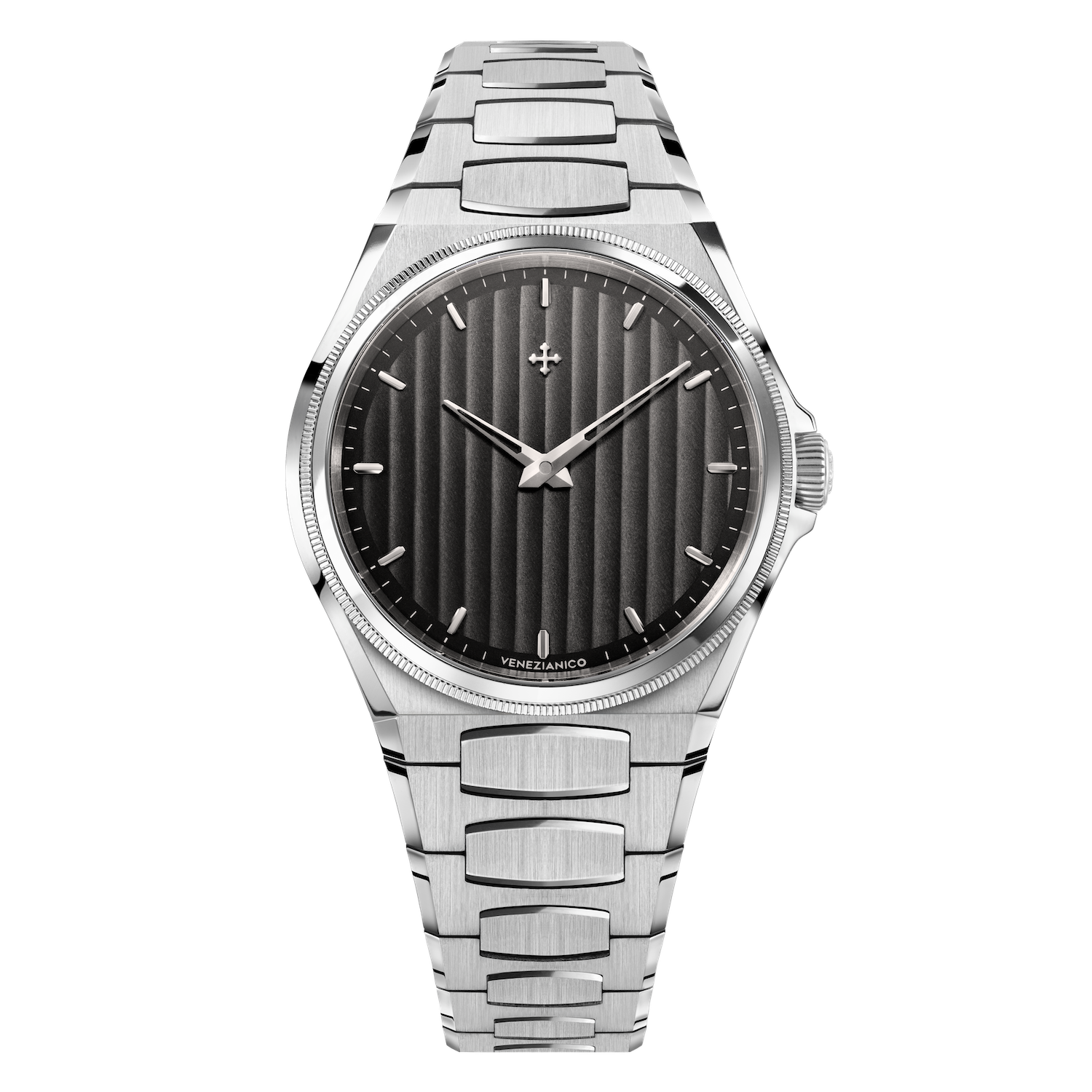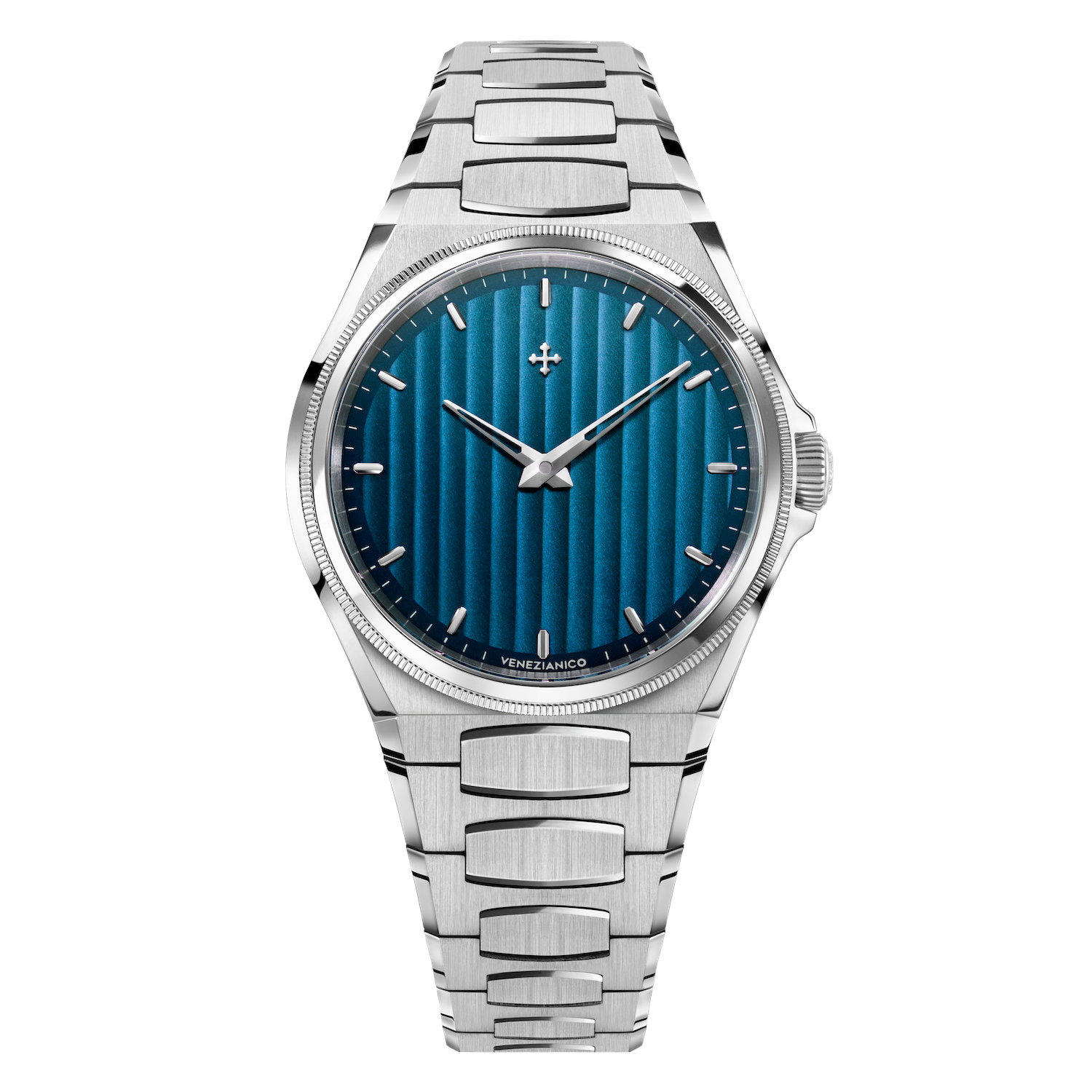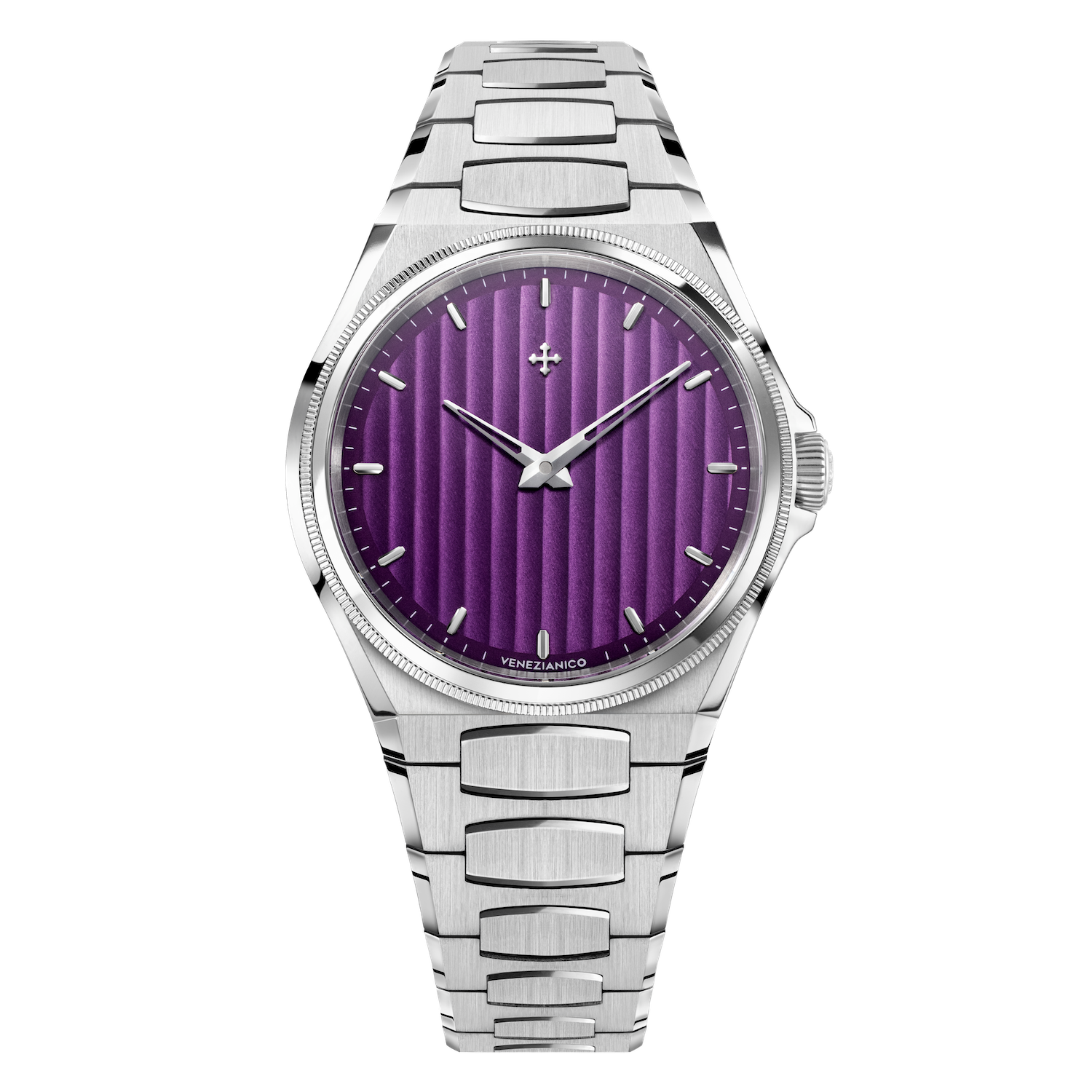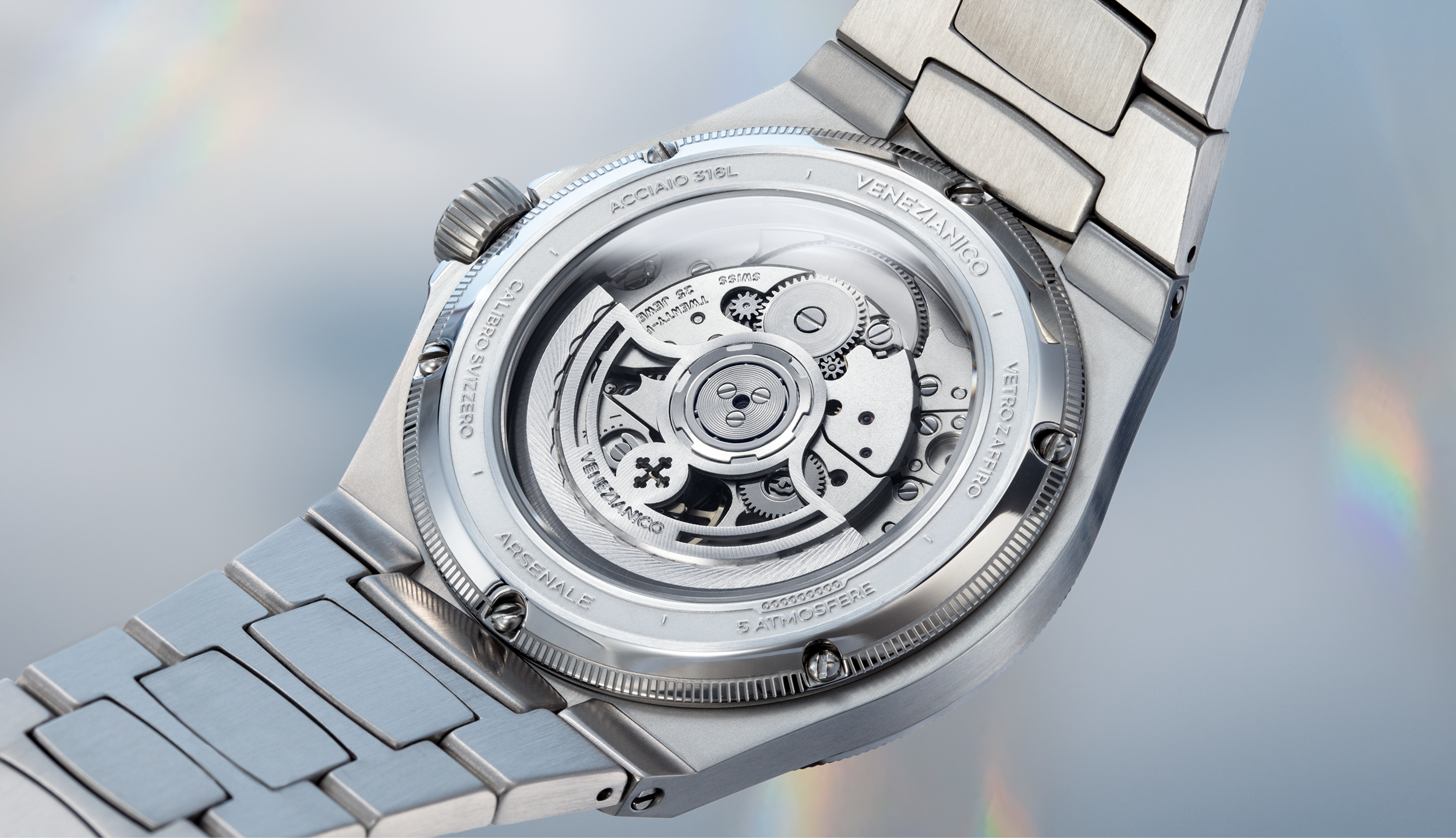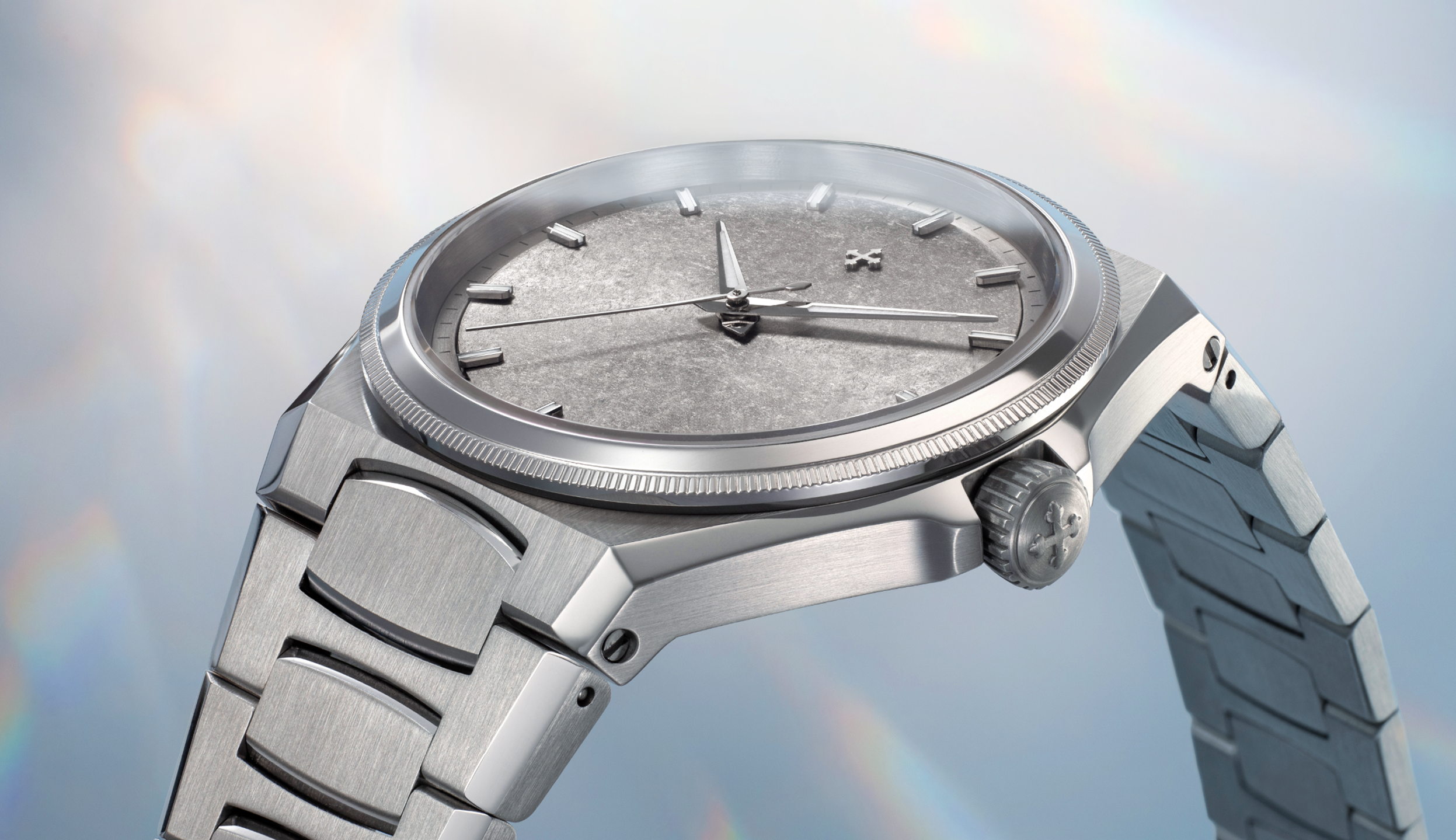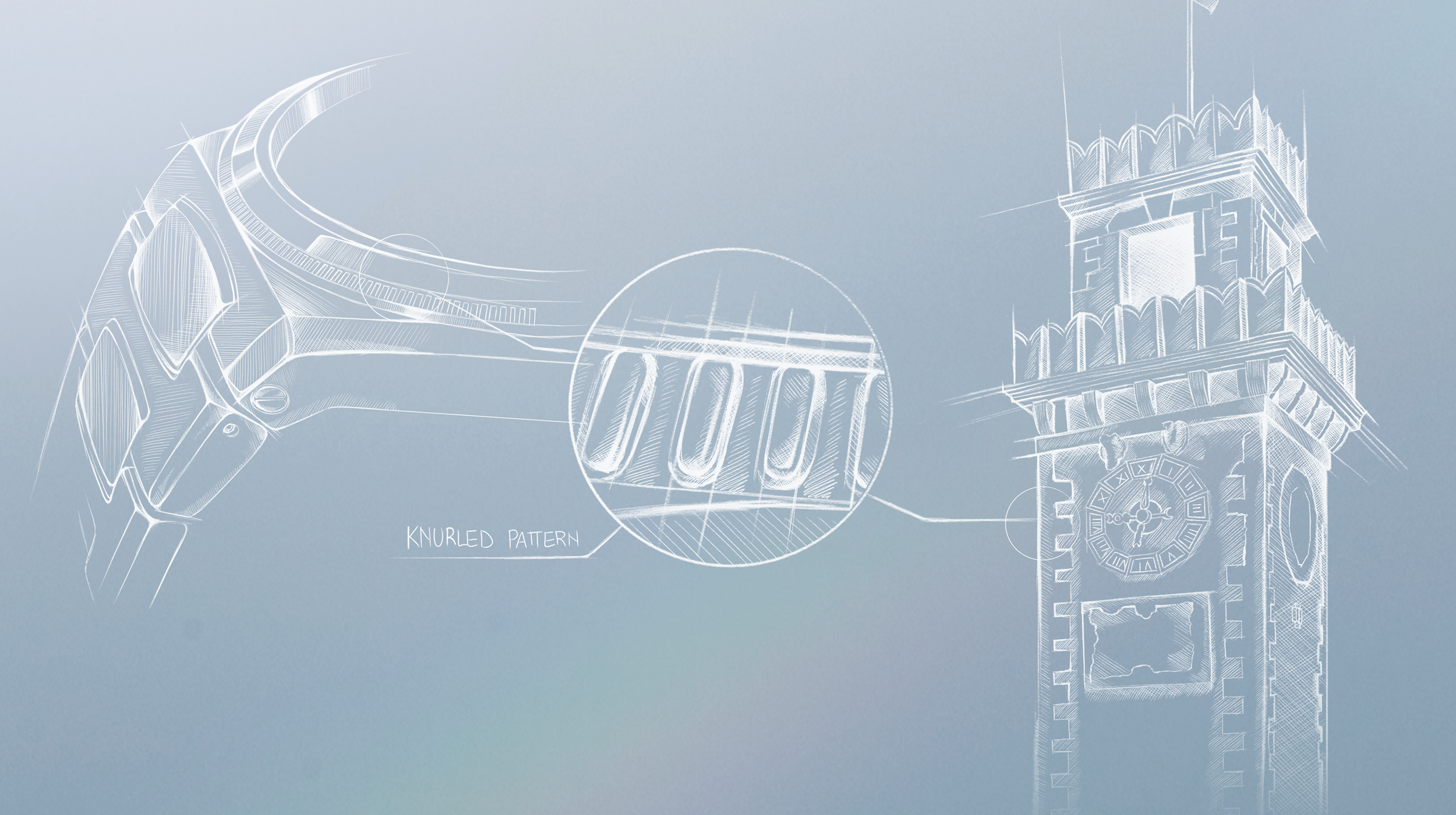








Arsenale Platino - 6221590C
 Pay in installments at checkout.
Pay in installments at checkout.
All recent U.S. import tariffs are already included in our prices. With Delivery Duty Paid (DDP) shipping, tariffs, duties and fees are fully covered. The price you see at checkout is exactly what you pay, with no surprises. Enjoy a smooth and worry-free shopping experience.
Arsenale Platino combines clean lines with the uniqueness of an incorruptible metal. The dial is finished using a special process developed by our team, combining controlled tumbling and a platinum galvanic treatment. The result is a vibrant, deeply luminous texture, unique to each piece. The 40 mm case, only 9.95 mm thick, stands out with its polished knurled bezel and vertically brushed surfaces. Inside, the Swiss Made automatic calibre V3250 (based on the Soprod M100) beats at 28,800 vibrations per hour, ensuring accuracy and reliability under all conditions.
CASE: 316L stainless steel, satin finish
DIMENSIONS: Ø40 mm, lug-to-lug 44.00 mm
DIAL: Platinum galvanic treatment, tumbled finish
LUMINOUS PIGMENT: BGW9 Super-LumiNova®
THICKNESS: 9.95 mm, including crystal
CASEBACK: Exhibition caseback, sapphire crystal
MOVEMENT: Swiss Made V3250 (Base: Soprod M100)
CRYSTAL: Sapphire with anti-reflective coating
BEZEL: Steel, knurled motif
WATER RESISTANCE: 5 ATM (=50 meters)
BRACELET: Canova Concept™
All orders include free shipping. Here are the average delivery times:
- EU Countries: 1-2 business days
- United Kingdom: 2-3 business days
- USA: 2-3 business days
- Other Countries: 2-5 business days
If the watch does not meet expectations, it can be returned within 14 days for a full refund of the purchase amount. For more info, check out our Terms and Conditions.



Discovered along the rivers of South America, platinum was resistant to fire and difficult to work with. The conquistadors called it platina, or “little silver,” unaware of its true worth. In 1557, Giulio Cesare Scaliger—a physician and humanist active in the Republic of Venice—described it in Europe for the first time as an unknown metal that could not be melted. For over a century it remained a mystery, until advances in metallurgy revealed its true value: one of the rarest and most durable metals in the world.

Dense, ductile, incorruptible. Platinum is one of the most stable metals in nature: it resists oxidation, remains unchanged when exposed to air, water, or acids, and maintains its integrity even at high temperatures. It has one of the highest densities among noble metals, making it noticeably heavier and confirming its solidity. It doesn’t tarnish, deform, or lose its structure even when worked into thin layers. For these reasons, it is used in highly demanding fields—from aerospace technology to fine watchmaking—where precision and reliability are essential.

Each dial starts from a brass base, which undergoes a tumbling process to create its texture—a rippled, intentionally imperfect surface that’s unique to every piece. After careful polishing, the disc is immersed in an electrolytic solution containing platinum. The galvanic treatment forms a uniform, durable layer that settles along the surface’s irregularities, preserving its distinctive texture.
Discovered along the rivers of South America, platinum was resistant to fire and difficult to work with. The conquistadors called it platina, or “little silver,” unaware of its true worth. In 1557, Giulio Cesare Scaliger—a physician and humanist active in the Republic of Venice—described it in Europe for the first time as an unknown metal that could not be melted. For over a century it remained a mystery, until advances in metallurgy revealed its true value: one of the rarest and most durable metals in the world.
Dense, ductile, incorruptible. Platinum is one of the most stable metals in nature: it resists oxidation, remains unchanged when exposed to air, water, or acids, and maintains its integrity even at high temperatures. It has one of the highest densities among noble metals, making it noticeably heavier and confirming its solidity. It doesn’t tarnish, deform, or lose its structure even when worked into thin layers. For these reasons, it is used in highly demanding fields—from aerospace technology to fine watchmaking—where precision and reliability are essential.
Each dial starts from a brass base, which undergoes a tumbling process to create its texture—a rippled, intentionally imperfect surface that’s unique to every piece. After careful polishing, the disc is immersed in an electrolytic solution containing platinum. The galvanic treatment forms a uniform, durable layer that settles along the surface’s irregularities, preserving its distinctive texture.



Cal. V3250
The V3250 automatic calibre (manufactured by Soprod SA and based on the M100) combines the reliability of Swiss Made mechanics with fine regulation between ±4 and +6 seconds per day. It offers a 42-hour power reserve and a frequency of 28,800 vibrations per hour, ensuring smooth and consistent timekeeping. Sandblasted bridges and a skeletonised rotor with rhodium plating reflect a functional and solid aesthetic. Each watch equipped with the V3250 is assembled in our Atelier in Italy by Daniele Zorzetto, a master watchmaker specialised in the construction and regulation of mechanical movements.
28.800 bph (4 Hz)
42 hours
Incabloc
-4/+6 seconds per day
3.6mm
25 jewels
Produced in Switzerland, by Soprod SA

Wrist ergonomics
With a diameter of 40 mm, a thickness of just 9.95 mm, and a lug-to-lug distance of 44 mm, Arsenale is designed to offer a balanced fit on a wide range of wrists. Its compact proportions, combined with the linear geometry of the case and the integrated bracelet, ensure both comfort and visual continuity.

A combination of advanced finishes
Arsenale Platino merges elements of classic watchmaking — such as polished Dauphine hands and a mirror-finished knurled bezel — with more technical and contemporary features. The bracelet links feature sharp vertical brushing, highlighted by polished bevels on both sides. The case also alternates brushed surfaces with cleanly finished edges, defining the volumes with precision. Every link, both central and H-shaped, is beveled on both sides to ensure visual consistency.
Technical specifications
Ø40 mm, lug-to-lug 44 mm, total thickness 9.95 mm
316L Stainless Steel
Platinum galvanic treatment, rippled finish
Swiss Made V3250 (Base: Soprod M100) Automatic, 3 Hands with No Date Function
Swiss-Made BGW9 Super-LumiNova®
Sapphire with anti-reflective coating
Exhibition caseback, 6 screws
Architectural legacy
The oldest shipyard of the future
The bezel of the Arsenale features a knurled motif inspired by the crenellations of the towers at the historic Venetian shipyard. This architectural reference, reinterpreted with a modern approach, gives the design a bold, recognizable identity and reinforces its link to history.


After galvanic treatment, each dial undergoes rigorous inspection to ensure the platinum layer is uniform and flawless. During the assembly phase, indexes and the logo are applied by hand with micrometric precision. Every detail is checked multiple times, concluding with a final inspection before the dial becomes part of the complete timepiece.


